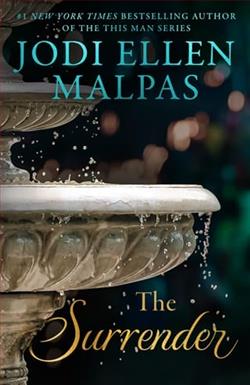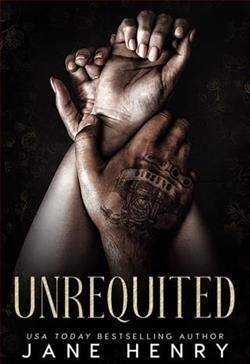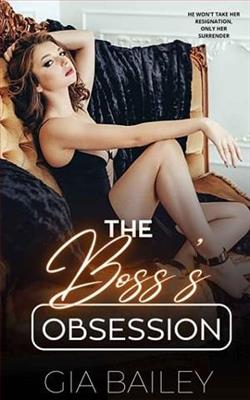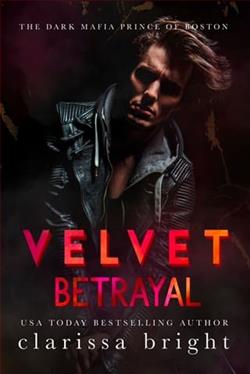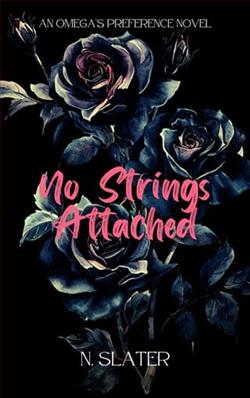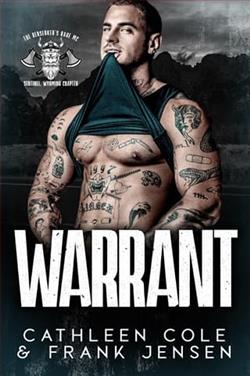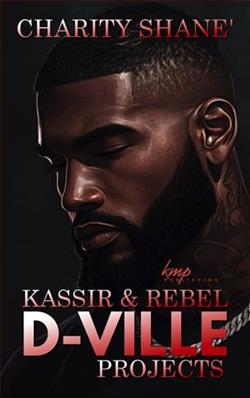Page 7 of The Lovers
“He strong-armed me into taking on this case,” Quinn complained good-naturedly as she smiled back at the doctor, who didn’t seem the least bit affected by the fact that he’d just autopsied a woman who appeared to be in her early forties.
“Me as well, but I was secretly pleased. Unlike those of us in the trenches, the administrators always have to worry about where their funding is coming from. I’d rather get my hands dirty any day rather than panhandle to endless bureaucrats in exchange for measly handouts. Come, let me introduce you to our ‘lovers.’”
“Well, since you put it that way, lead the way,” Quinn said and followed Dr. Scott down the corridor.
“Actually, Sarita Dhawan, my assistant, is performing most of the tests, but she’s very thorough, I assure you.”
They entered a separate room, where a young Asian woman was tapping away at her computer, her huge dark eyes reflecting the screen in front of her. She looked up in greeting, a smile transforming her narrow face from serious to radiant in an instant.
“Good morning, Dr. Allenby,” Sarita called out from her perch as she gave Dr. Scott a questioning look.
“Can you finish up for me, Sarita?” he asked as he inclined his head toward the room he’d just come from. “Just close her up. I’ll enter the results once I’m finished in here.”
“Sure thing, boss,” Sarita answered as she slid off her stool and reached for an apron and a pair of latex gloves.
“What was it that killed her?” Sarita asked.
“Intracerebral hemorrhage,” Dr. Scott replied, his attention already on the metal slab in the middle of the room. Sarita nodded and left the room with some reluctance, casting a look of pure longing at the remains. Whatever Dr. Scott said would be more interesting than closing up a body after an autopsy, a pathologist’s version of grunt work.
“Shall we begin?” Dr. Scott asked as he walked briskly toward the slab, rubbing his hands in childish anticipation.
Two skeletons were laid out side by side, the chest they’d been found in discreetly stored in the corner of the room and wrapped in clear plastic to prevent accelerated decay caused by exposure to oxygen and sunlight. Quinn would examine the chest later, but for now all her attention was focused on the remains. Even if she had not known that the skeletons were those of a male and female, she would have been able to guess just by looking at them. The male skeleton was much longer, raw boned, with large hands and feet. The female was dwarfed by the male, her bones narrow and delicate by comparison. She might have been mistaken for a boy were it not for the wider pelvis.
“So, what have you discovered?” Quinn asked as she accepted a pair of latex gloves from Dr. Scott and approached the slab with some trepidation. She always felt a pang of anxiety when confronted with human remains. These individuals had died years before, but her heart turned over at the sight of them. They’d been living, breathing people once, people who loved and hated andworried about things just as any person did today. They had names and people who cared about them, but now they were just two anonymous skeletons lying on a cold metal slab in a twenty-first-century morgue, their bones almost translucent beneath the merciless florescent light coming from the fixture above.
Dr. Scott didn’t seem to share Quinn’s bout of sentimentality as he reached for a manila folder containing the test results. Unlike her, who dealt with death in a more academic manner, he faced down death every single day and was immune to the ugliness and decay that immediately followed the passing of a person. Dr. Scott was more interested in the physical aspects, whereas Quinn longed to know about the actual person and the life they’d led.
“We’ve conducted the usual tests: carbon-14 dating, mineral analysis, degree of bone calcification, and isotope mapping to determine the paleo environment and reconstruct the paleo diet of the subjects. What we have here are the skeletal remains of a male and a female, and they are roughly four hundred years old. The male was in his mid-twenties. Judging by his height and the condition of his teeth, I’d say that he came from a well-to-do background and enjoyed adequate nutrition for most of his life. There are bony ridges on his right wrist, so he likely did some type of work that required prolonged use of his right hand; I can’t ascertain what kind, but he might have been a craftsman of some sort or a blacksmith—a workingman, at any rate. He’d sustained broken ribs and several broken fingers on his left hand, but they were well healed by the time of his death.”
“How did he die?” Quinn asked, staring at the man’s grinning skull as if it might offer up some clue to his fate.
“There is no indication that he was murdered before being placed in the chest. His skull is intact, and there are no nicks from a knife on any of his bones. It’s possible, of course, that someonecould have slid a knife under the ribs and into the heart, but I doubt that was the case since we found no traces of blood, which would have been there had he suffered a violent death. He most likely died of asphyxiation.”
“And the woman?”
“The woman was younger, possibly in her late teens or early twenties. Only two of her wisdom teeth had come in, and clavicle fusion hadn’t occurred yet. There are no obvious signs of violence, so she likely died in the same way as her mate. I can say, however, that she’d had at least one child, possibly more.”
“Is that all you can tell me?” Quinn asked, slightly disappointed. She hoped for something more to go on before starting her quest for the identity of these two, and Gabe had made it clear that time was of the essence.
“Oh no, my dear. I have lots of surprises for you,” Dr. Scott replied, his tone jovial. “We have been able to recover several strands of hair, bits of fabric, and scraps of leather as well as several metallic objects that you can evaluate at your leisure.”
Dr. Scott led her to a side counter where the specimens were displayed in labeled plastic bags. He was practically glowing with excitement. Quinn supposed that this was a welcome break from autopsying cadavers, a historical puzzle rather than the final journey of someone who was now nothing more than a slab of meat, dissected and analyzed for the benefit of the family who needed answers or for the police, desperate for clues in an investigation.
“Although we found hair, we were unable to extract any nuclear DNA due to the lack of a root. We did, however, find a few broken nails, which were much more helpful. We did extensive DNA testing, and here’s what we found. The man’s hair was dark; it appears to have been either a dark brown or black, andhe had light eyes. He was Caucasian, of Norman and Saxon descent, and he was not related to the woman. Can’t say that last bit surprises me,” Dr. Scott joked, implying that the man and woman were romantically involved. They might have been, but Quinn didn’t wish to jump to any conclusions that might sway her findings until she knew more.
“As I mentioned before, he enjoyed a plentiful diet for a man of his time. He might have suffered from a mild calcium and vitamin C deficiency, but that was common since people subsided mostly on bread and meat and hardly ate any vegetables, fruit, or dairy. The deficiency wasn’t severe enough to make him lose his teeth, at least not yet. We x-rayed his skeleton and saw no evidence of disease, which would have appeared as holes or lesions. Bone density is normal. We found that he had a version of the Klotho gene associated with long life.”
Dr. Scott smiled ruefully at Quinn. “So, what we have here is a healthy young man, with a predisposition for a long life, who died at an unnaturally young age. We did discover a type of monoamine oxidase enzyme which accounts for impulsive behavior, so he might have been something of a hothead.”
Dr. Scott paused dramatically to give Quinn a moment to draw her own conclusions as to the type of behavior that might have resulted in someone being locked in a chest while still alive and left to die a slow and agonizing death. Quinn shuddered, imagining what it must have felt like to be buried alive, entombed with no avenue of escape and the knowledge of certain death. She hoped that the man and woman had already been dead and the chest used in lieu of a coffin, but Dr. Scott immediately disproved that theory by pointing to a small baggie containing slivers of torn nails.
“There were scratches on the inside of the lid, which was what accounted for us finding the broken nails. They were both alive and conscious when they went into that chest.”
Quinn sighed, longing for this interview to be over. She felt claustrophobic in this windowless room and couldn’t wait to get outside. “Tell me about the woman.”
“The woman had reddish-blonde hair and light eyes. Her ancestry was Saxon with a few Scots thrown in. She tested positive for the BRCA1 gene, which meant that she would have most likely developed breast cancer at some point in her life, and showed PER2, which would have made her an early riser. She had a vitamin D deficiency and, judging from the condition of her teeth, didn’t get enough calcium in her diet, but otherwise she was a healthy young woman.”
“Is that all we know about her?” Quinn asked, hoping for something more to go on.








